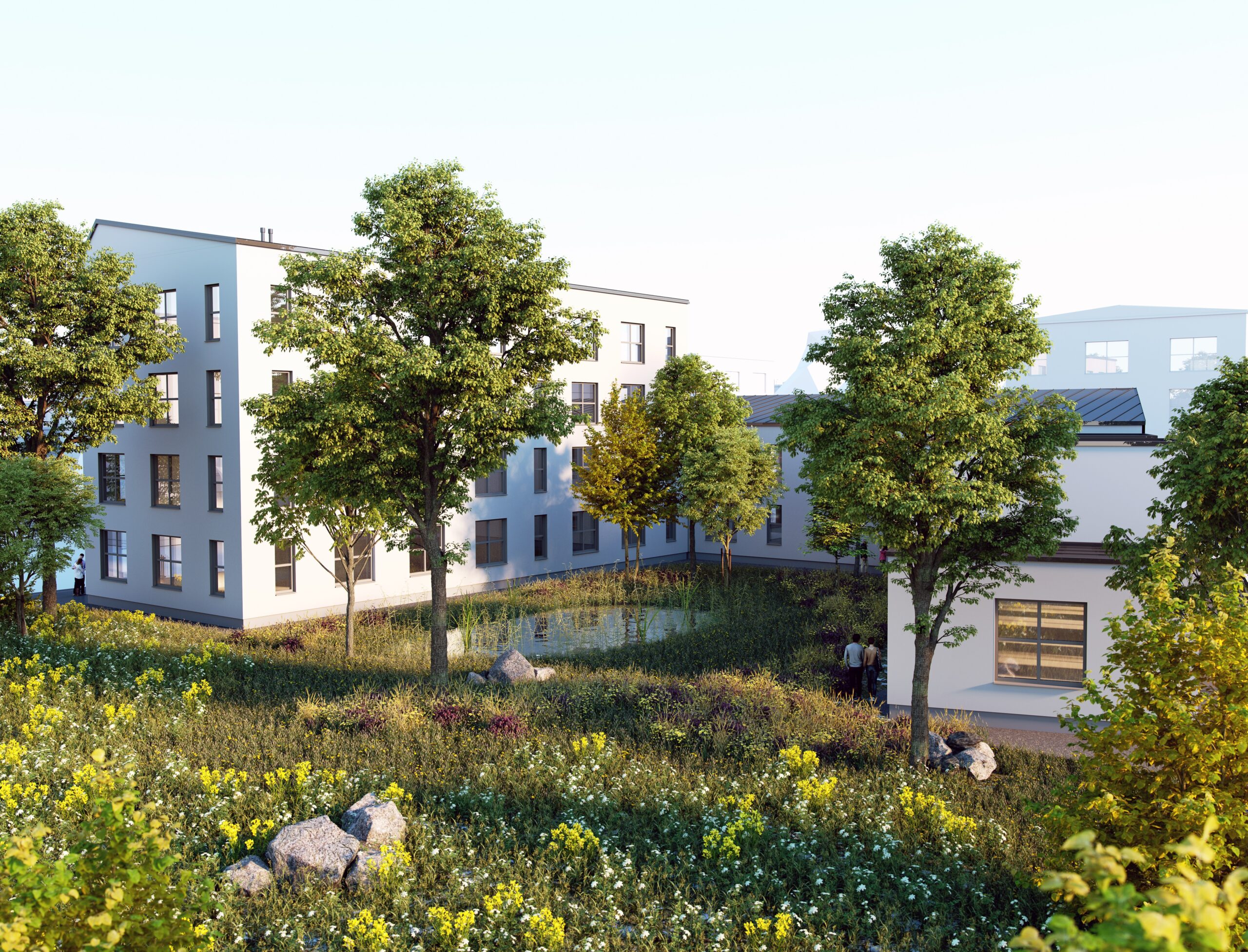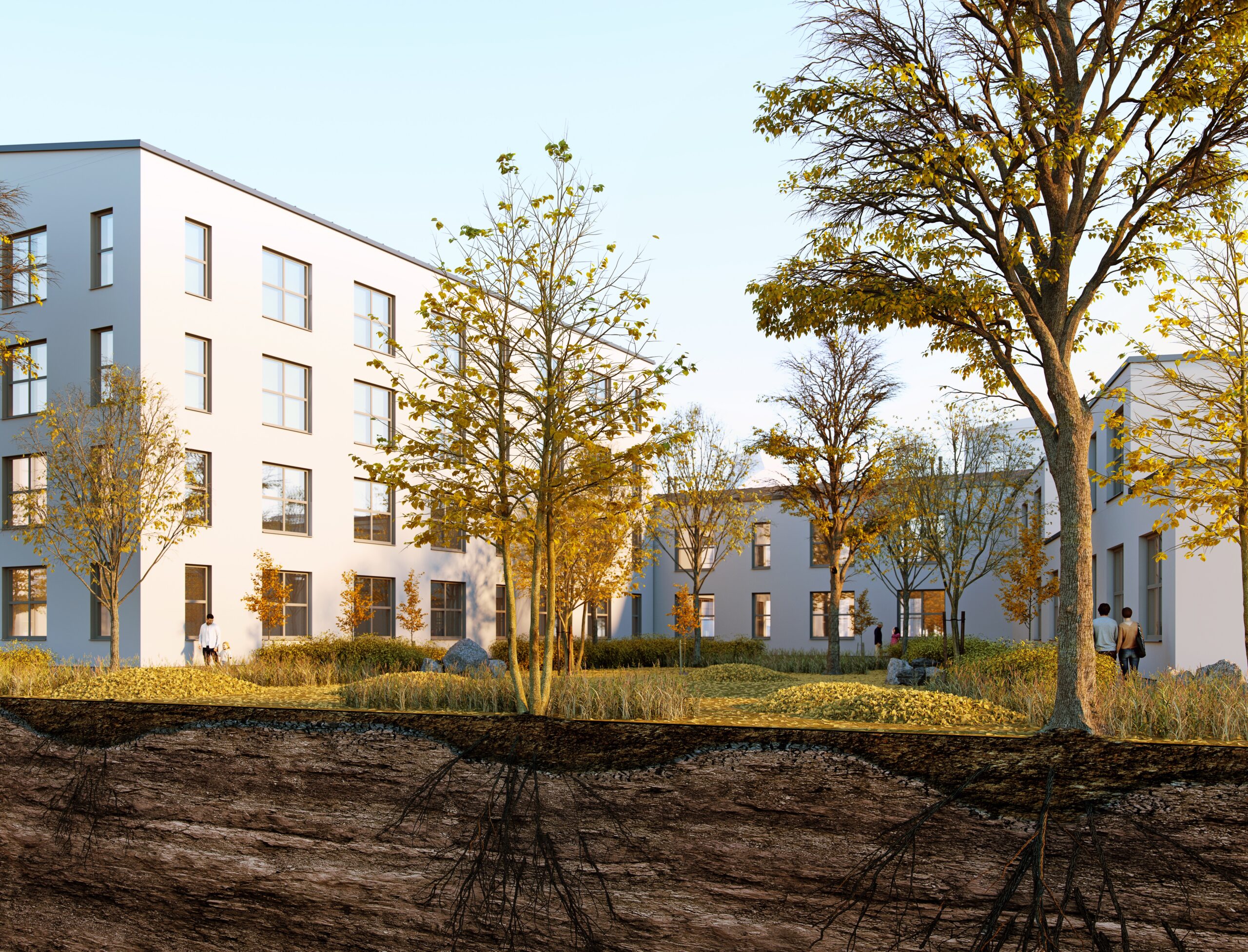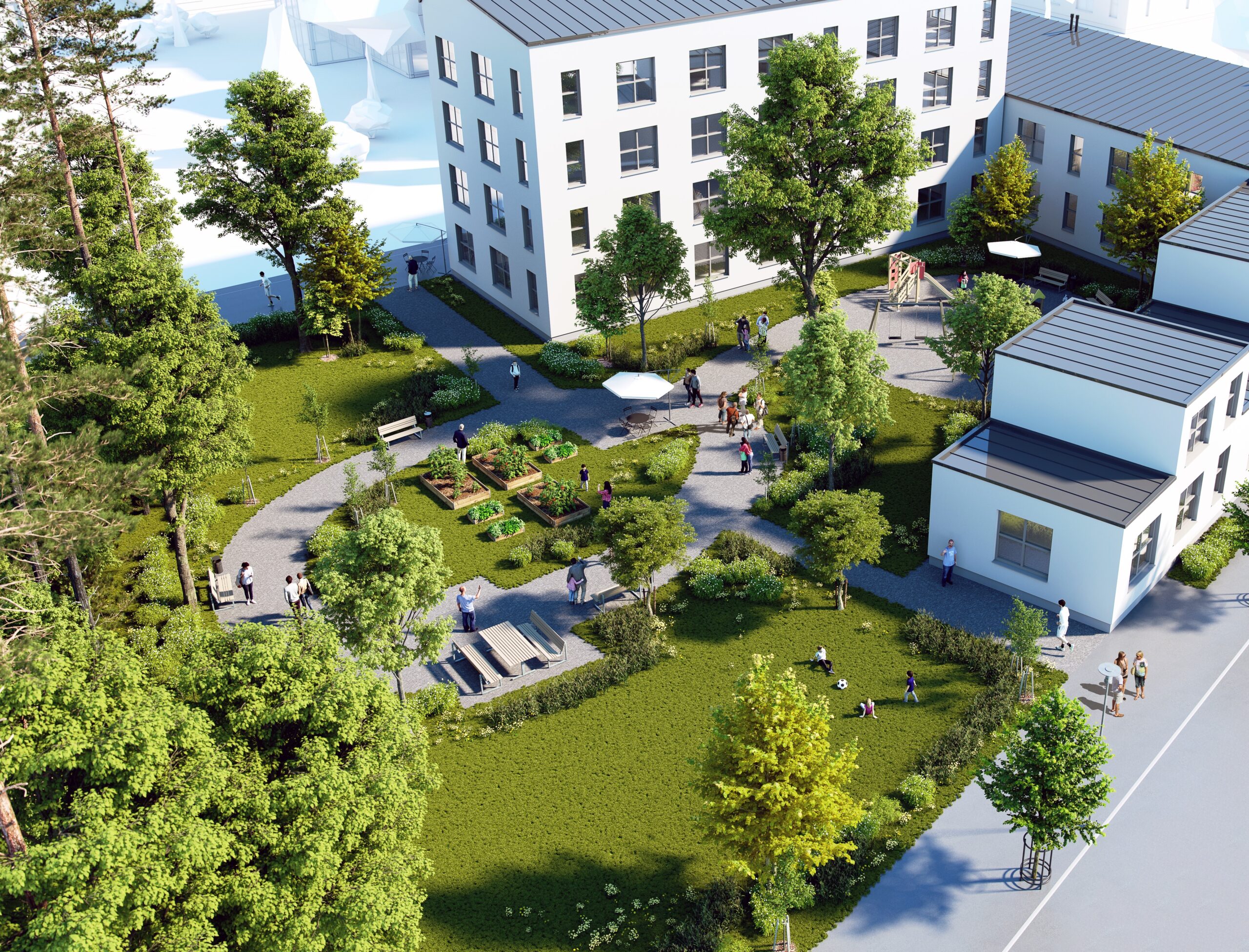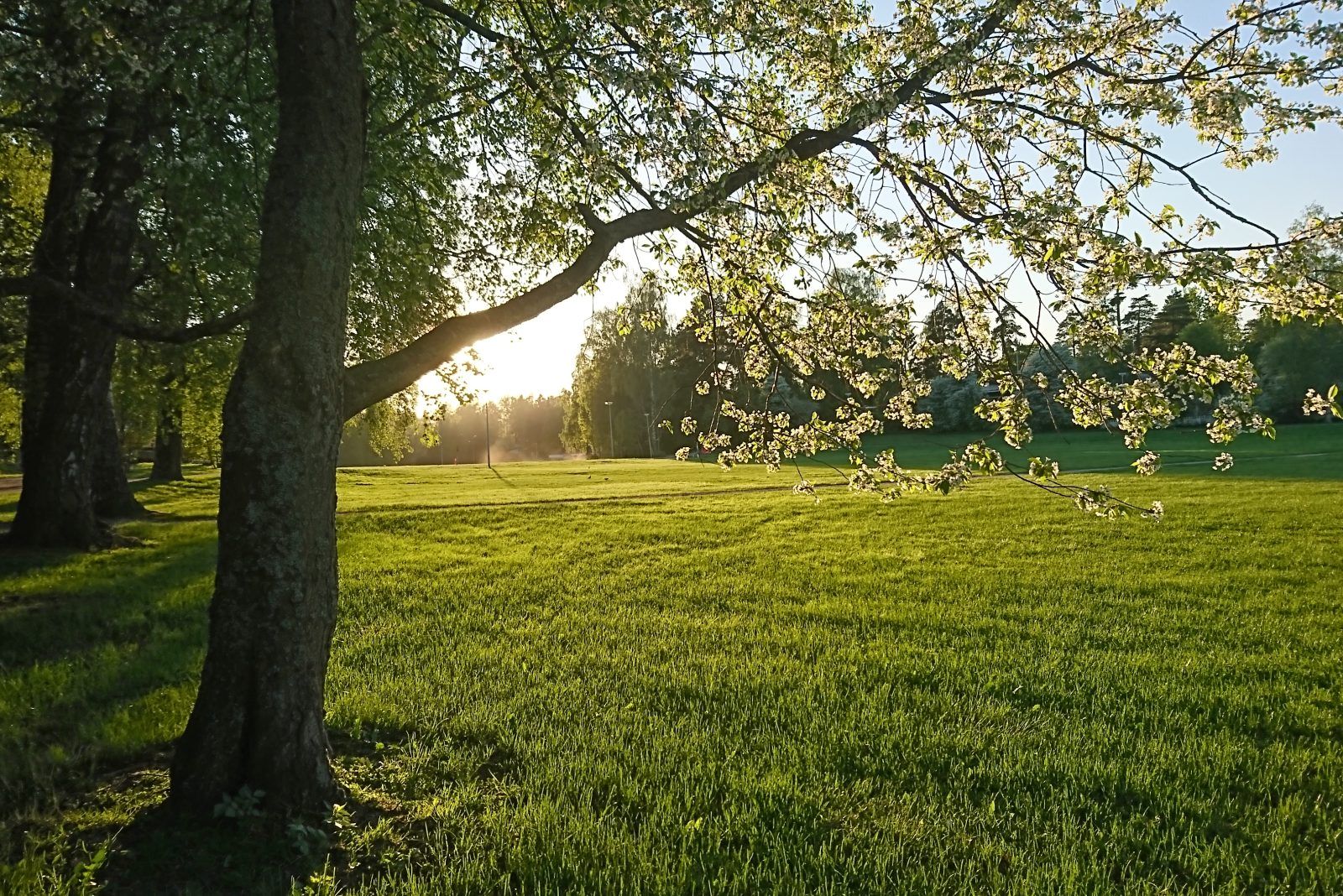Welcome to read the CO-CARBON policy recommendations for cities. You can either download the recommendations below as a PDF file or alternatively read them on this webpage.
Carbon-smart urban green infrastructure as a climate solution

Cities play a key role in achieving Finland’s carbon neutrality goal. In addition to reducing emissions, it is also necessary to increase carbon sinks. This is enabled by urban green i.e., all the green spaces in cities ranging from forests and meadows to built parks, street plants, and yards. Thus, it is important to better utilize the possibilities of urban green spaces as a potential carbon sink and as a cost-effective and multi-functional climate solution. CO-CARBON proposes carbon-smartness as a solution and suggests five ways to improve the carbon sequestration of green structures, to secure carbon sinks in urban planning, and to develop low-emission practices for landscape construction and management, while producing other vital ecosystem services at the same time.

1. From carbon footprint to multifunctional carbon handprint
The building and real estate sector currently accounts for about 40 per cent of the global greenhouse gas emissions. This extensive carbon footprint can be reduced with vegetation, which is the cheapest and the most multifunctional way to create a carbon handprint in an urban environment. Unlike the carbon footprint, the carbon handprint focuses on the positive climate impacts. It refers to factors that mitigate climate change, such as solutions for carbon sequestration that would not take place without planning or building projects. Increasing the carbon handprint requires identifying the climate impacts of green structure, setting binding city-level targets for urban green spaces, and estimating the carbon handprint in the life cycle assessment of building projects. The carbon handprint of urban green spaces provides several benefits. Promoting carbon-smartness also strengthens other ecosystem services: mitigating heat waves and urban floods, controlling ground washed away to surface waters, as well as supporting biodiversity and human wellbeing. Responding to the climate and nature crisis requires examining several viewpoints at the same time as well as strengthening the multifunctionality of urban green infrastructure.

2. Focus on the amount, quality and life cycle of urban green spaces
The climate benefits are directly dependent on the amount of green and its potential to store carbon. Maintaining existing urban vegetation and soil is the primary way to maintain carbon sinks. Thus, the most valuable carbon sinks should be left unbuilt. Lost vegetation not only leads to lost carbon storage but also at least a temporary decrease in carbon sink. When building new areas, it is important to ensure sufficient space and favourable growing conditions for urban greenery and its multiple benefits which are needed especially in dense urban environment. While existing green spaces are vital for carbon storage, new urban greenery can also be efficient carbon sinks when planned and constructed in a carbon-smart manner. In particular, planning must pay attention to expanding the surface area covered by vegetation, implementing multifunctional and layered urban greenery, as well as using low carbon growing media. The life cycle of urban green should be as long as possible to increase carbon storage. This also allows the initial emission peak to stabilize that is caused by the carbon released from the growing media used for planting.

3. Carbon-smart practices for landscape construction and management
The choice of construction technology and management practices of urban green spaces affect carbon storage. During the construction phase, especially the soil must be considered since a large part of the carbon has been stored in it. When constructing green spaces, the microbiological processes of the soil must be fostered, for example by preserving the existing soil and utilising recycled soil, compost, or biochar-based solutions. It is also possible to affect the carbon storage of soil through management practices, such as developing new practices for locally handling leaf litter. In addition, low-emission materials and practices require further development. For example, the use of lawn, which has been considered a standard solution, should be critically examined from the point of view of both emissions caused by mowing and biodiversity. Transferring towards multifunctional management practices such as converting lawns into meadows requires a change in both national policies as well as the attitudes of residents and experts.

4. Social sustainability as a part of climate solution
Promoting carbon-smartness in a socially sustainable and just manner requires citizens’ support for climate solutions. When planning and implementing carbon-smartness, different values and viewpoints regarding urban green spaces must be considered and balanced. These include climate targets, biodiversity, cityscape goals, and recreation. It is also important to consider how to promote carbon-smartness, who will benefit from it, and who is allowed to participate in the decision making. Residents affected by the decisions concerning green spaces must have the right to participate in their planning. They can also be engaged in the maintenance of green spaces by experientialising the implementation of carbon smartness. A growing understanding of the many benefits of urban green spaces increases respect and the social acceptance of management practices supporting carbon-smartness and its co-benefits.

5. More climate benefits with more efficient steering instruments
The climate benefits of urban green spaces must be considered at all levels of planning starting from strategic policies to implementation tools. These benefits and the impacts of different alternatives on carbon sinks must be identified when assessing the climate impacts of land use planning. The carbon sequestration of green structure must be also included in more detailed planning: for example, the green factor tool and different environmental classifications can be developed in a way that they also consider carbon sequestration. Planners and builders can be encouraged to increase the carbon handprint for example through procurement criteria. Life cycle assessment, which is already well-established in the building sector, must be expanded to the planning and construction of green spaces. This brings us closer to holistically evaluating the emissions of built environment. Life cycle assessment also allows determining when and where to build; for example, heavy preconstruction, building courtyards atop parking garages and different kinds of paving materials, as well as transportation costs increase the carbon footprint of urban green spaces.
Webinar recording 17.5.2023
Carbon-smart urban green as a climate solutions – policy recommendations for cities
Information about the CO-CARBON research project
CO-CARBON is an interdisciplinary research project that quantifies and models the carbon sequestration of urban green spaces and creates solutions for planning, implementing, and managing carbon-smart urban green infrastructure. The research group consists of atmospheric, soil and social scientists as well as landscape architects. In addition to scientific research, solutions are developed in cooperation with cities, companies, expert organisations, and residents. The aim is to support decision making that promotes carbon sequestration and carbon-smart solutions. The project is funded by the Strategic Research Council (SRC) at the Academy of Finland.
Get to know the research behind the policy recommendations.
Contact information
Authors: Hautamäki, Ranja; Järvi, Leena; Ariluoma, Mari; Kinnunen, Antti; Kulmala, Liisa; Lampinen, Jussi; Merikoski, Tiina; Tahvonen, Outi
More information:


